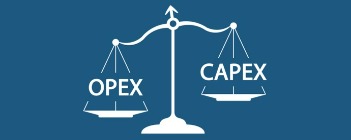Content

This https://intuit-payroll.org/ is most accurate as it accommodates for changing product prices as well as all cash sales. If you want a total for annual or quarterly credit sales, you can simply start recording a credit sales amount at the beginning of that period. Then, each time you update accounts receivable, you can add to the sale amount to your credit sales amount for that period.Remember that sales tax is included in credit sales amounts. The average collection period is calculated by dividing total annual credit sales by half the sum of the balance of starting receivables and the balance of ending receivables. The average collection period, as well as the receivables turnover ratio, offer useful insight into assessing the company’s cash flow and overall liquidity.
RAYONIER INC MANAGEMENT’S DISCUSSION AND ANALYSIS OF FINANCIAL CONDITION AND RESULTS OF OPERATIONS (form 10-K) – Marketscreener.com
RAYONIER INC MANAGEMENT’S DISCUSSION AND ANALYSIS OF FINANCIAL CONDITION AND RESULTS OF OPERATIONS (form 10-K).
Posted: Fri, 24 Feb 2023 22:32:13 GMT [source]
Credit Sales is the part of sales that is done on a credit basis i.e. cash is not to be collected immediately from sales but is collected after a specified period of time as per the policy of the company. To increase the sales the organization gives credit facilities to its customers and it is given to the persons having good market standing i.e. ability to pay for the sales made or it is given to the known customers. Generally, for a large number of sales, a credit facility is given so that the customer gets a sufficient amount of the time to resale the goods and arrange the finance. Net credit sales are calculated as sales done on a credit basis less sales return on a credit basis and sales allowance. The net receivable, adjusted for the estimated uncollectible accounts is $750,000 minus the allowance of $10,000. That means that we expect to collect in cash $740,000 once all the payments and non-payments are accounted for.
How to Calculate Credit Sales
It’s never a bad thing for a company to know where its sales are coming from, and this includes calculating cash and credit sales. Calculating credit sales, using accounts receivable, isn’t quite as simple, as adding up all of the receivables during a specific time frame. Other things, such as the age of the account and any discounts, have to be considered. For example, if a business had $200,000 in total sales over a period of time and $140,000 of those were credit sales, their percentage of credit sales would be 70 percent. Allowances are discounts given to customers for a variety of reasons. For example, a company might allow early-payment discounts or apologize for an order that arrived late by reducing its price.
- This will likely lead to an increase in Jim’s operating cash flow, which may allow the company to consider debt financing in the future.
- The account of ABC Trading Concern as of December 31st, 2019, shows total sales of Rs. 10,00,00, of which 80% are in credit and sales return and allowance of Rs. 12,000.
- Thus, virtually all of the remaining bad debt expense material discussed here will be based on an allowance method that uses accrual accounting, the matching principle, and the revenue recognition rules under GAAP.
- One way companies derive an estimate for the value of bad debts under the allowance method is to calculate bad debts as a percentage of the accounts receivable balance.
This amount would reduce the total number of cash sales, if the customer has already paid for the item or if the accounts receivable balance was from a credit customer. This reduces the total sales to $190,000 ($200,000 in total sales, minus $10,000 in returns). Allowance for doubtful accounts is a financial metric that estimates the value of rendered services or goods sold that you don’t expect to get paid for. Essentially, it’s a tool used in accrual accounting as a way of tracking bad debt up front with the end goal of maintaining more accurate financial statements.
Net Credit Sales Calculation Example
To protect your business from late or nonpayment on invoices, it is important to use the right tools to thoroughly check the creditworthiness of customers before you extend credit. Here are six ways to determine creditworthiness of potential customers. To determine the creditworthiness of a customer, you need to understand their reputation for paying on time and their capacity to continue to do so. To protect your business from late payment or nonpayment on invoices, it is important to use the right tools to thoroughly check the creditworthiness of customers before you extend credit. First, it reduces the value of the receivables to the amount of cash expected to be realized in the future. Second, it matches the uncollectible expense of the current period with the related revenues of the period.
What is meant by credit sales in business?
The term “credit sales” refers to a transfer of ownership of goods and services to a customer in which the amount owed will be paid at a later date. In other words, credit sales are those purchases made by the customers who do not render payment in full at the time of purchase.
Credit sales carry a great deal of risk despite their convenience, including processing fees. Bad credit expense refers to purchases that go uncollected due to credit card complications on the customer end. If her sales increase by 10 percent, she can expect your total sales value in the upcoming month to be $66,000.
Ten tips to get your customers to pay on time
Some Determining A Firms Percentage Of Credit Sales estimate bad debts as a percentage of credit sales. The percentage-of-sales method is commonly used to estimate the accounts receivable that a business expects will be uncollectible. When you use this method, use your small business’s past collection data to estimate what portion of the credit sales you generate each accounting period that will go unpaid. The amount of this estimated portion represents your doubtful accounts, which remain in a separate account in your records until you actually write off a specific account receivable. The amount of doubtful accounts you estimate each period reduces your profit as a bad debts expense on the income statement. Companies that use the percentage of credit sales method base the adjusting entry solely on total credit sales and ignore any existing balance in the allowance for bad debts account.
- Trade receivables requires that you calculate the income statement impact and the balance sheet impact.
- Regardless of the approach, both bad debt expense and the allowance for doubtful accounts are simply the result of estimating the final outcome of an uncertain event—the collection of accounts receivable.
- Material cost was budgeted for $5 per pound and the actual cost was $8 per pound.
- Explain the reason that bad debt expense and the allowance for doubtful accounts will normally report different figures.
- This means that your debt-to-income ratio is low and that you have a good chance of being approved for a loan.
- We’ll cover a better method, the one used by most companies for year end financials, in the next section.
Next, Liz needs to calculate the percentage of each account in reference to her revenue by dividing by the total sales. Subsidiary ledgers can be utilized in connection with any general ledger account where the availability of component information is helpful. Other than accounts receivable, they are commonly set up for inventory, equipment, and accounts payable. As might be imagined, big companies maintain subsidiary ledgers for virtually every T-account, whereas small companies are likely to limit use to accounts receivable and—possibly—a few other large balances. Variation of percentage of receivables method where all receivables are categorized by age; the total of each category is multiplied by an appropriate percentage and then summed to determine the allowance balance.
Our aim of studying cash conversion cycle and its calculation is to change the policies relating to credit purchase and credit sales. The days sales outstanding figure is an index of the relationship between outstanding receivables and credit account sales achieved over a given period. This means that for every $1 in assets, there is $0.50 in debt. A higher ratio may be a sign that a company is using too much debt to finance its operations. It is important to consider these factors when interpreting the debt-to-sales ratio, as they can impact the company’s financial health and ability to service its debt.

The second method uses A/R aging reports to assign expected default rates to aging categories. Another important factor in determining credit standards involves a company evaluating the credit worthiness, or credit score, of an individual or business. Management must decide on credit standards, which involves decisions on how much credit risk to assume. To establish a credit policy, a company must establish credit standards, credit terms, and a collection policy.
Explain the reason that bad debt expense and the allowance for doubtful accounts will normally report different figures. The credit sales might increase the expenses as the collection expenses are to be levied. We are balancing the matching principle and usefulness against perfection. We need to provide a reasonable picture of the company’s financial position at the end of the year, and that includes an estimate of accounts that will never materialize into cash. We haven’t posted any other transactions, but you can see we didn’t record the write off of the prior year’s sale as an expense in this year. We already “recognized” the expense in year one when we recognized the revenue from all that work we did. This year, we are simply recognizing the actual account that went bad.
For example, for an accounting period, a business reported net credit sales of $50,000. Using the percentage of sales method, they estimated that 5% of their credit sales would be uncollectible. They are using the same credit policies as other accounting firms and expect about the same amount of bad debt on a percentage basis. Credit sales are distinct from cash sales in that the customer is not required to make a full payment on the date of sale. Instead, they purchase their order on account and are allowed a set amount of time in which to make payments.


